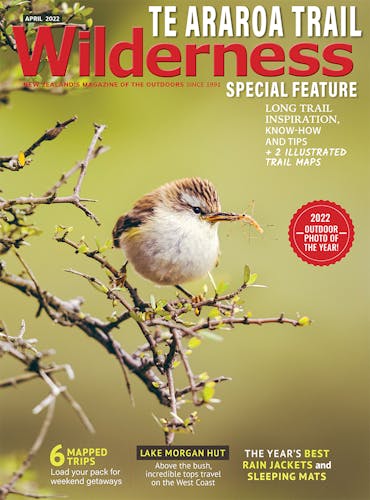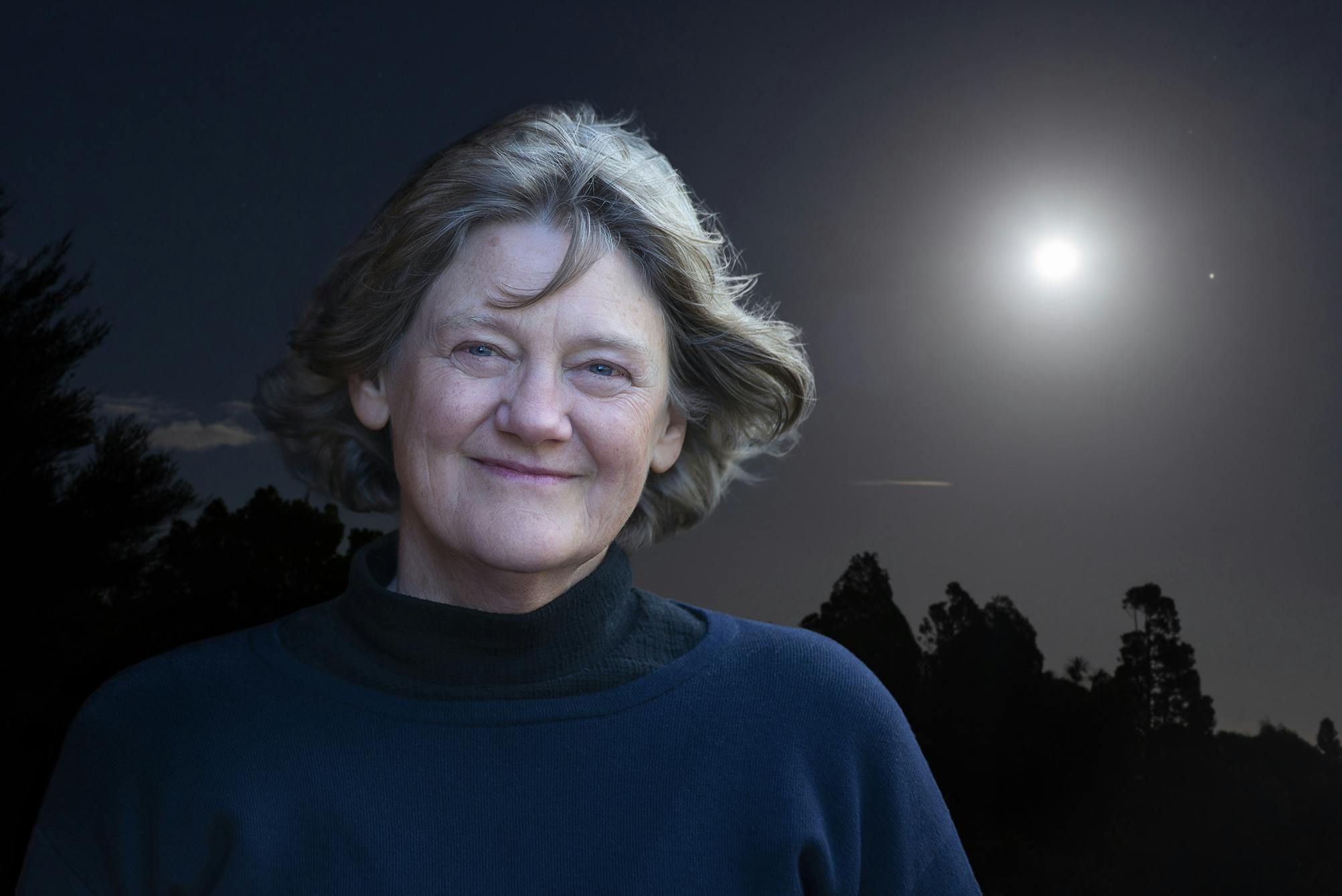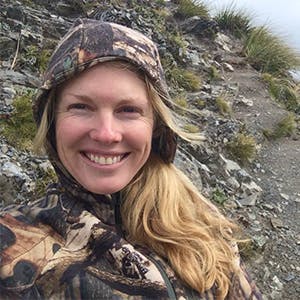Annette Lees’ third book After Dark: Walking into the nights of Aotearoa combines memoir with stories of nature and social history. Taking readers from dusk to dawn – in the company of bats, lighthouse keepers and trampers – it inspires us to step out into the night.
In After Dark, you mention being given a bat detector and registering a bat through it as ‘the moment this book was born’. Tell us about that.
I’ve always loved the night, but as you grow up and become an adult, life becomes busy and you forget those lovely moments you had as a child in nature. One evening, I had this bat monitor in front of me and it pinged to say there was a bat above me and it was completely unexpected. I knew there were bats in the Waitākere Ranges but did not know they were on our little 10-acre block. When I looked up and saw that bat, it was a heart-stopping moment. I wanted to connect to its world, and it was a sudden memory of what a night can hold in its magic and mystery. I started to follow the bat and work out where it was coming from and spend a lot of time outdoors in the dark. It dawned on me this was a special time in our 24-hours that we had neglected. So I started exploring it.
Has writing about nighttime changed your relationship to it?
I’ve always walked in the night and swum in the dark, but having to observe yourself doing it and articulate what’s around you heightens your powers of perception. You take for granted you’re not going to see as much in the dark, but if you’re going to write about that you have to understand why. You start to research it and find out all sorts of things you didn’t know. So night walking became a much livelier, richer experience.
Do you walk with others at night or by yourself?
If I can encourage someone to come with me, I like to walk with others. But I also like walking on my own. And I’m not afraid of nights, I used to be when I was a child, but that was partly out of thrill. I enjoy the solitude of night and its quietness. But walking with others is also companionable. And sitting around a fire is the most companionable thing I can think of at night – it’s a time for people to tell stories, enjoy music and reminisce. Eating together around a fire is just terrific.
You write that a fear of darkness can be a fear of death. Given your experience of losing a child, could you speak to that?
If we’ve experienced loss, it comes close to us at night. But it’s also a time of great solace because it’s a time that invites introspection. It suits grief. We all suffer grief, so exposing yourself to night and being available to that time is a warming thing to do. It’s less lonely because that is a time when we’re closest to the things that are of great meaning to humans.
You’ve got a Master of Science in Protected Landscape Management and run a consultancy company. How does your day job inform your writing?
They inform each other actually. This is one of the delights of working in nature conservation because conservation is much more than species management; it’s also about working with people and their dreams, desires, concerns and limitations. I get to meet people who are doing wonderful things on their land. And if they’re thinking conservation, they’re usually thinking deeply about meaning, purpose and legacy. Those are things I like to think about when I’m writing. And [they] give me ideas for what connects us to the natural world, and how we can draw on that connection to make really good change in the way we manage our planet.
After Dark is available in the Wilderness store. Subscribers get a 10% discount.








